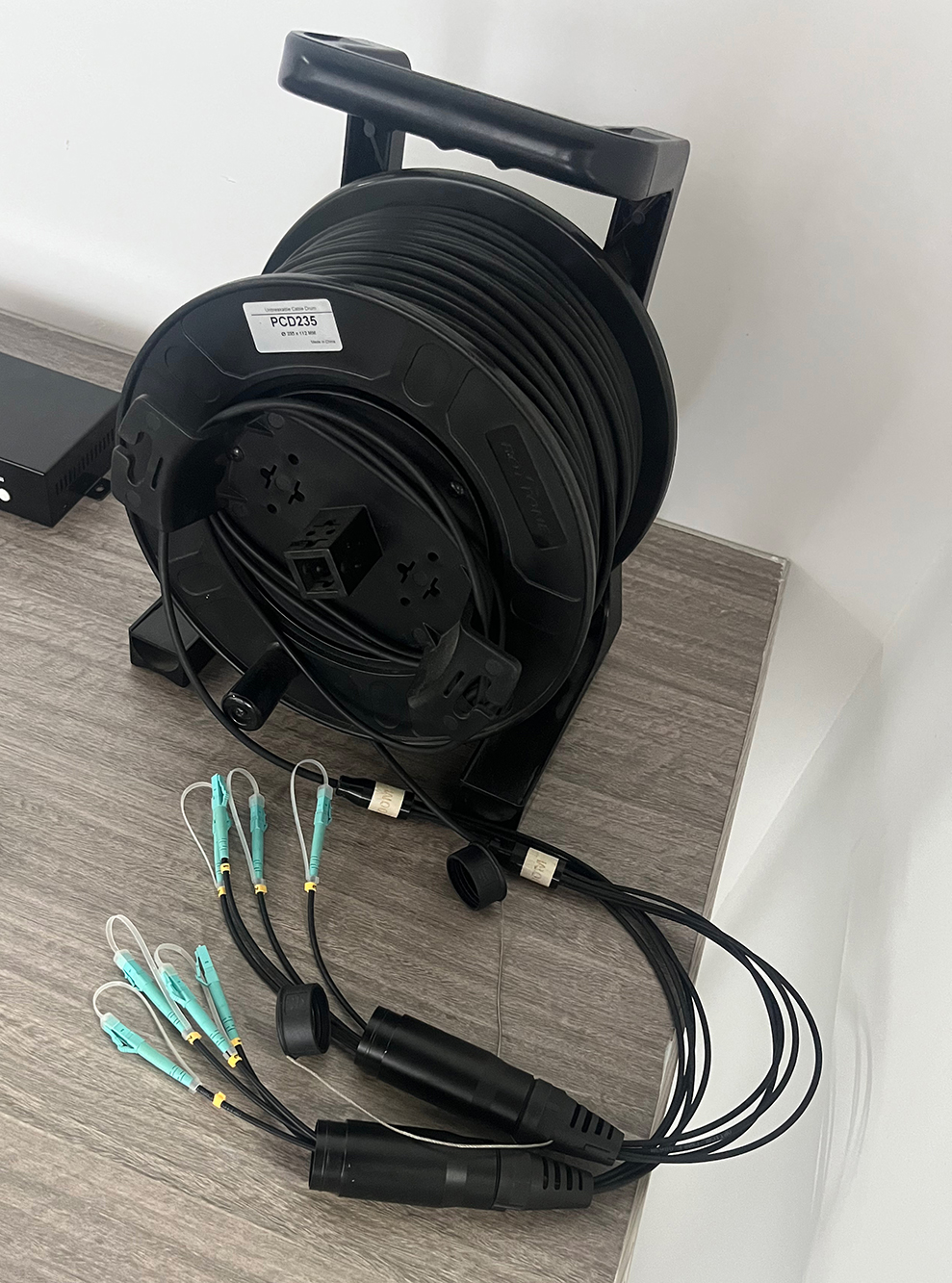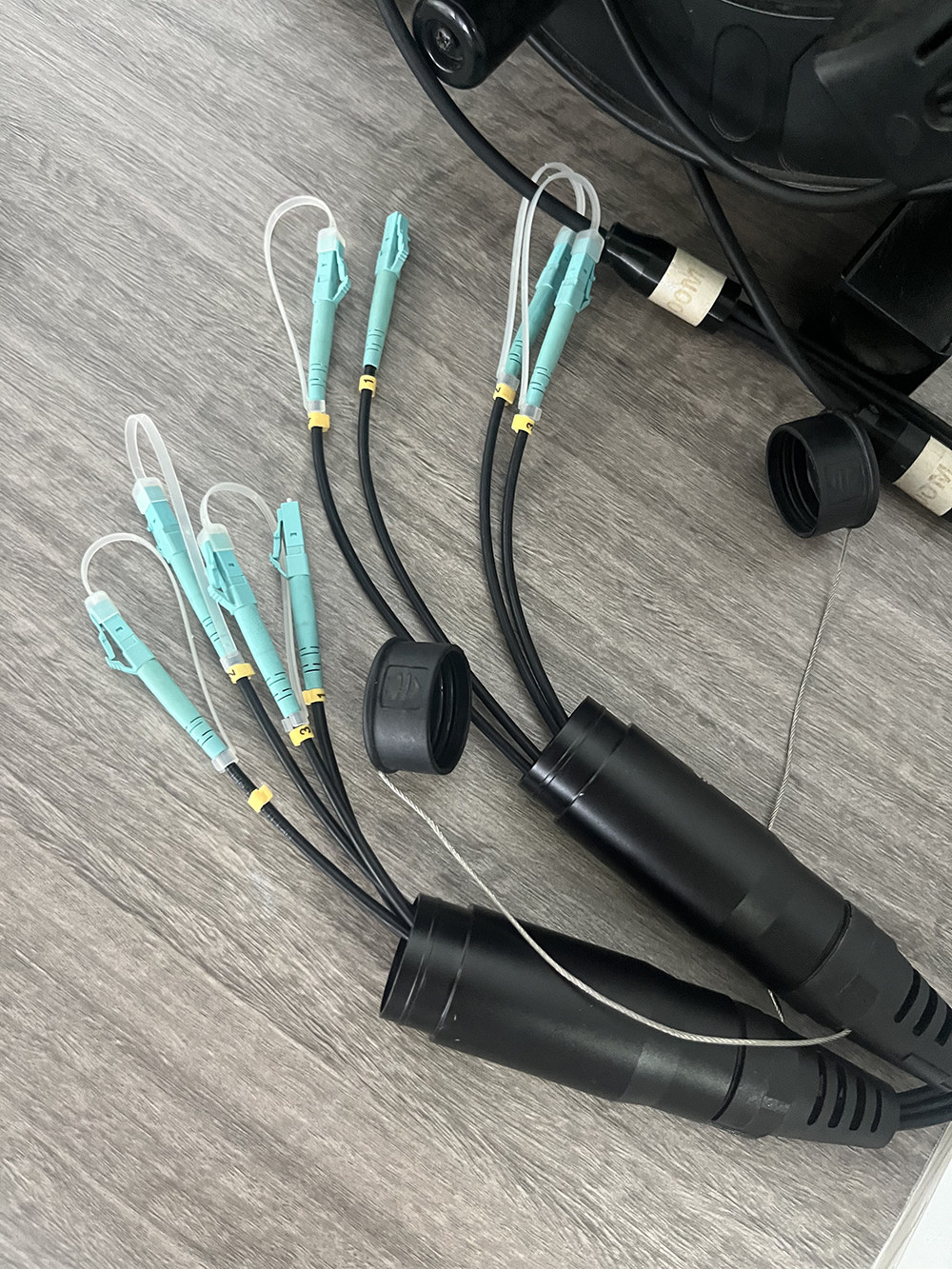

The armored fiber optic technology, as a high-performance transmission medium, has found extensive application across various domains. Particularly in the realm of LED display screens, armored fiber optics play a pivotal role. Faced with the demand for high-definition, top-quality displays, LED screens increasingly require a reliable, stable, and efficient data transmission method. Consisting of a fiber optic core, cladding, and protective layer, armored fiber optics possess unique attributes such as interference resistance, durability, and high-speed transmission, rendering them an indispensable component within LED display screens.
The evolution of optical fibers has undergone several stages, and armored fiber optics stand as a pivotal element among them. Traditional multimode and single-mode fibers each exhibit specific characteristics in transmission: multimode fibers are suitable for high-speed short-distance transmission, while single-mode fibers enable longer distance communication. Armored fiber optic technology amalgamates the advantages of both, significantly enhancing data transmission speed and distance within the LED display screen domain.
In the construction process of LED display screens, armored fiber optic technology not only carries high-definition video and audio signals but more importantly, ensures the stable and reliable transmission of these signals, guaranteeing clear and steady visuals. Its outstanding anti-interference performance effectively minimizes signal distortion and interference during transmission, providing a solid assurance for the high-quality display of LED screens.
The introduction of armored fiber optic technology marks not just a technological upgrade for LED display screens but an all-encompassing enhancement in display quality, stability, and reliability. For the design and evolution of modern LED display screens, armored fiber optic technology is undoubtedly an indispensable and pivotal innovation.
Given the extensive application of fiber optic technology in LED display screens, armored fiber optics play an essential role in this domain. As the development of LED screens progresses toward high-definition, high-brightness, and high-stability, the need for data transmission becomes increasingly urgent. In this context, armored fiber optic technology emerges as the ideal choice to meet these demands, owing to its exceptional performance characteristics and stable transmission capabilities.
The utilization of armored fiber optics brings about a revolution in data transmission. Compared to traditional copper cables, armored fiber optics offer lower latency, higher bandwidth, and longer transmission distances. This technology's high reliability ensures the stable operation of LED screens, immune to interference, ensuring the consistency and stability of display effects. Its robust anti-interference capability further reinforces reliable transmission, particularly in complex environments such as large-scale venues, billboards, and stage performances, effectively guaranteeing overall signal transmission quality.
The introduction of armored fiber optic technology has alleviated the limitations posed by transmission distances and signal stability for LED display screens, effectively overcoming the bottlenecks associated with long-distance transmission and high-quality display. Consequently, it not only brings technological innovation to LED displays but also provides a robust foundation for their development, ushering in a new era of high-definition, high-efficiency, and high-reliability displays.
The application of fiber optic technology in LED display screens commonly involves two types: **single-mode** and **multi-mode**. Their differences lie in the way light propagates and the dimensions of the fibers, which significantly impact the performance and effectiveness of LED displays.
**Single-mode fiber** features light propagation along the fiber's center, resulting in minimal light scattering and loss. This characteristic enables single-mode fibers to achieve longer transmission distances and higher bandwidth, suitable for scenarios requiring long-distance and high-speed data transmission. In LED displays, single-mode fibers are often used in extensive venues, billboards, and other long-distance transmission scenarios to ensure stable signals and high-definition displays.
On the other hand, **multi-mode fiber** permits light to propagate through multiple pathways, with larger fiber dimensions leading to increased light scattering and loss. Consequently, multi-mode fibers offer relatively shorter transmission distances and lower bandwidth. However, they exhibit favorable performance in environments requiring short-distance transmission and lower bandwidth demands. In LED displays, multi-mode fibers are commonly utilized in small indoor displays and short-distance transmission scenarios, meeting general data transmission requirements.
Therefore, the choice between single-mode and multi-mode fibers depends on specific application scenarios and demands. In the design and application of LED displays, selecting the appropriate fiber type—based on varying transmission distances, data bandwidth, and transmission quality requirements—is crucial to achieving optimal display effects and stability.
When it comes to the design and performance enhancement of LED displays, armored fiber optic technology plays a crucial role. It not only provides reliable data transmission but also positively impacts the performance and effectiveness of LED displays in the following ways:
1. **Stable Signal Transmission:** Armored fiber optics utilize specialized outer layer protection, offering high resistance to interference during long-distance transmission. This ensures that the signal remains stable without external disruptions, reducing the risk of signal distortion and thereby ensuring the display quality and performance of the LED screen.
2. **Long-Distance Transmission:** Armored fiber optic technology enables long-distance transmission, delivering signals to LED display devices situated at distant locations. This capability broadens the application scope of LED displays to venues like stadiums, large event spaces, and billboards while maintaining signal quality and clarity.
3. **Data Bandwidth and Speed:** Armored fiber optic technology supports high bandwidth and fast data transmission, meeting the requirements of LED displays for data transmission speed and quality. This is crucial for high-resolution, high-refresh-rate, and high-quality LED displays.
**Stability and Reliability:** Armored fiber optics possess high stability and reliability, particularly vital for LED displays that operate for extended durations. They ensure consistent signal transmission under varying environmental conditions, guaranteeing sustained operation and long-term stability of LED displays.
In summary, armored fiber optics play a crucial role as a reliable data transmission medium in the design and operation of LED displays. They provide robust support for the display performance and capabilities of LED screens through stable signal transmission, long-distance transmission, high bandwidth, speed, and steadfast reliability. The technology of armored fiber optics is gradually becoming a key player in the LED display industry. Presently, more LED display manufacturers are embracing armored fiber optics to address challenges related to long-distance transmission and signal stability. The usage and future trends of this technology in the industry are reflected in the following aspects:
**1. Current Usage:**
Armored fiber optics have become the preferred transmission medium for many large-scale LED display projects, particularly in scenarios demanding long-distance signal transmission or high signal stability. These scenarios include venues like sports stadiums, billboards, large stage backgrounds, control centers, and exhibition halls. It provides stability and reliability in signal transmission in these settings, ensuring high-quality display performance.
**2. Future Development Trends:**
With continuous advancements and innovations in LED displays, armored fiber optics are expected to have a more widespread application in the LED display industry. As the technology progresses, the cost of armored fiber optics is gradually decreasing, further encouraging its use in LED displays. In the future, the technology may focus on improving data transmission speed, reducing latency, and strengthening support for high-resolution and high-refresh-rate signals, meeting the market demands for higher-quality and higher-performance displays.
**3. Industry Trends:**
The LED display industry is evolving towards larger, thinner, clearer, and more flexible displays. The advancements in armored fiber optic technology will provide more possibilities for the design and application of LED displays. As the application areas of LED displays continue to expand, armored fiber optics, as a critical medium for data transmission, will continue to play an essential role.
Overall, armored fiber optics, as a reliable data transmission solution, will continue to play a vital role in the LED display industry. As technology evolves and applications innovate, this technology will adapt to industry demands and steer the future direction of LED display technology.
The importance and potential of armored fiber optic technology in the LED display sector are significant. Its significance and potential are mainly manifested in several aspects:
**1. Technological Significance:**
As an innovation in the LED display industry, armored fiber optic technology provides an efficient, stable, and reliable solution for data transmission. It addresses issues such as distance limitations, signal attenuation, and interference encountered in traditional cable transmission, thereby enhancing the stability and quality of signal transmission. This is crucial for the LED display industry, where high-definition, brightness, and efficiency demand reliable signal transmission.
**2. Future Development Potential:**
Continual innovation and improvements in armored fiber optic technology offer more development opportunities for the LED display industry. With technological advancements, the transmission speed of armored fiber optics will increase, signal attenuation will decrease, and both bandwidth and transmission distance will further expand. This implies that LED displays can have more flexibility in selecting transmission distances and signal quality during design and installation, thereby achieving more efficient applications.
**3. Industry Drive and Enhancement:**
The continuous evolution of armored fiber optic technology significantly drives progress and enhancements in the LED display industry. It brings about more stable signal transmission and higher-quality display results, revolutionizing the performance and user experience of LED displays. Moreover, the application of armored fiber optic technology fosters innovation in display screen design, expands the application domains of LED displays, and presents broader prospects across various industries.
**Conclusion:**
In conclusion, armored fiber optic technology stands as a crucial innovation in the LED display industry, indispensable for enhancing display effects, extending transmission distances, and improving signal stability. As this technology continues to refine and its application scenarios expand, it will further stimulate the development of the LED display industry, consistently propelling the industry towards higher technological standards and quality.
